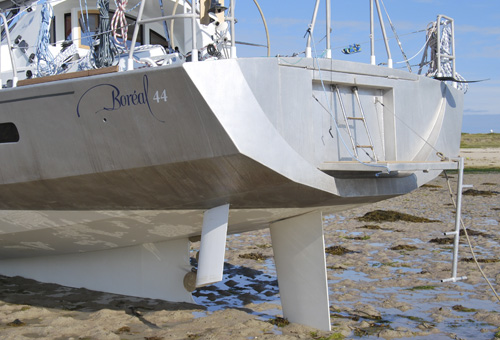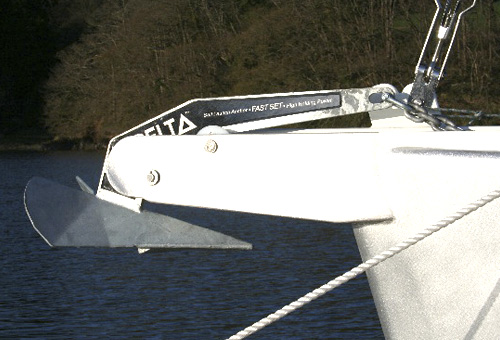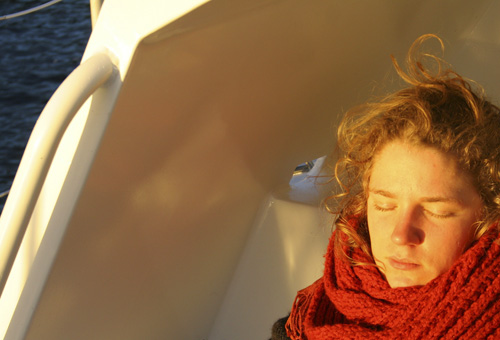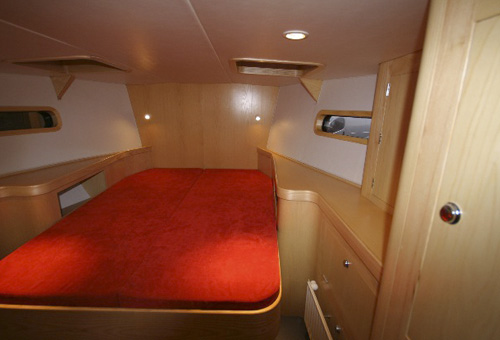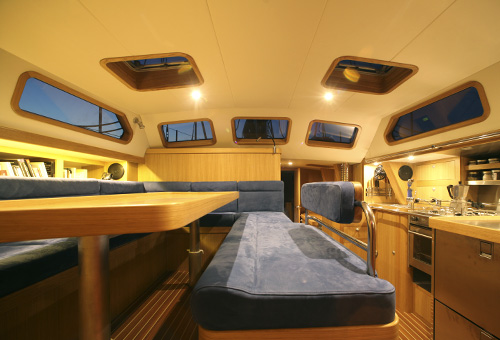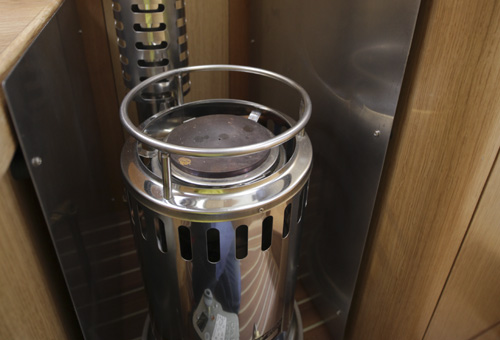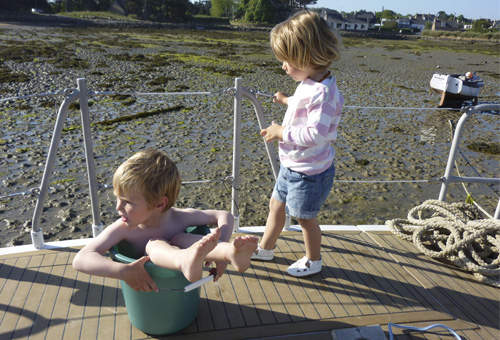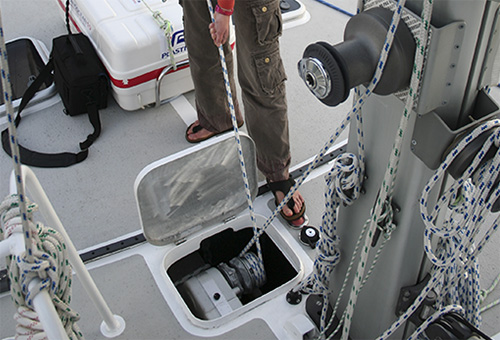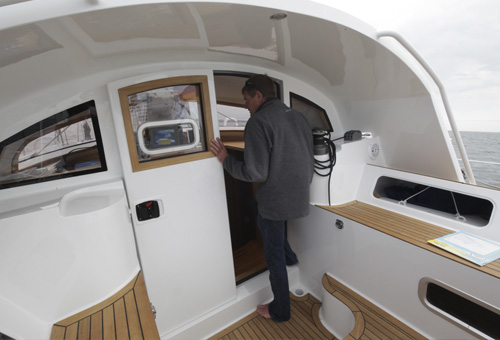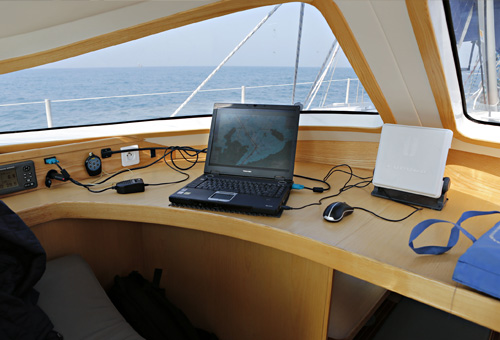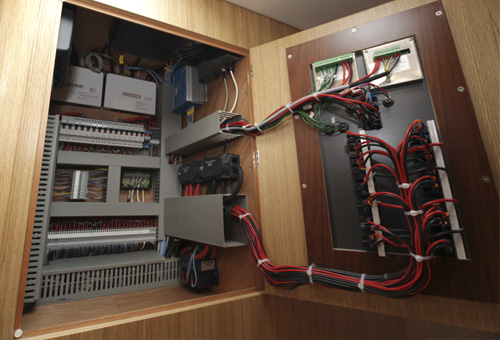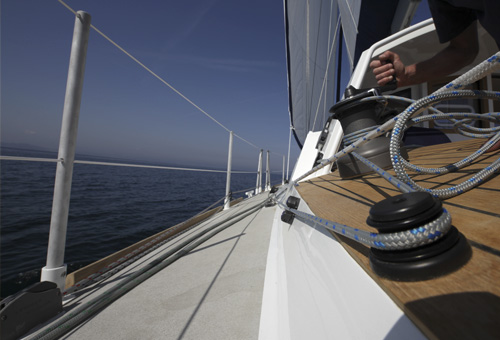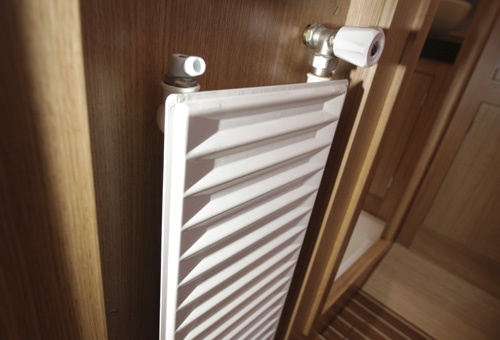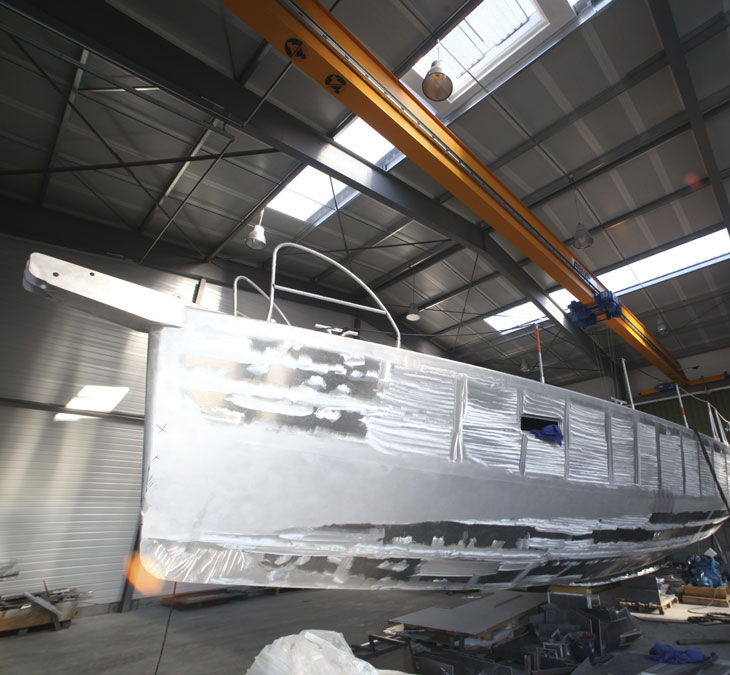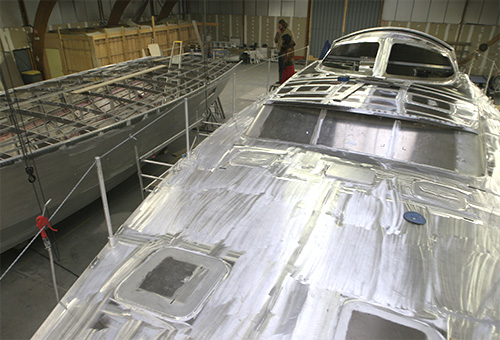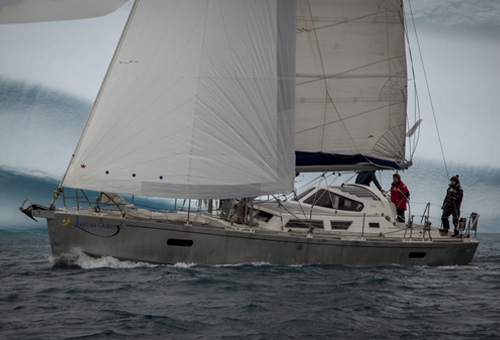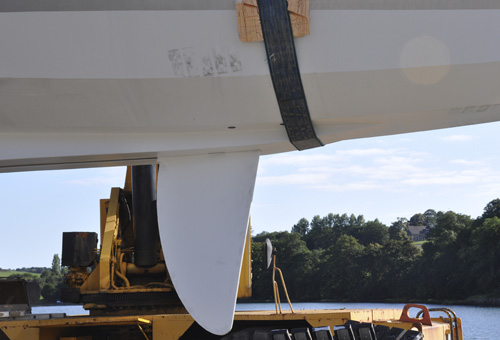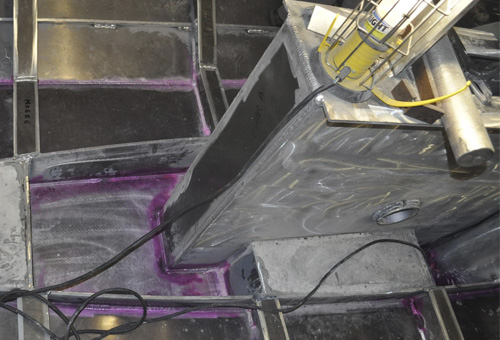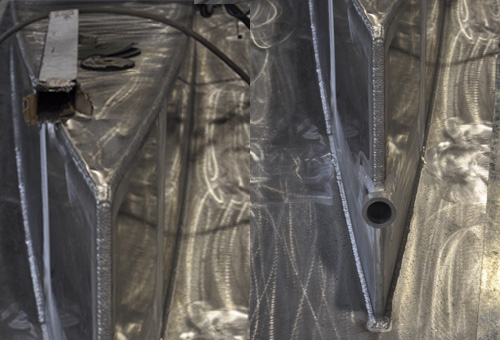The five-legged sheep’s concept
The requirements are the ones of a true blue water sailor.
The Boréal is a solid and large all rounder conceived to bring you to the remotest places on earth and live aboard (permamently).
“I wanted to build a solid but performing boat, a voluminous all-rounder, comfortable at sea and at anchor, easy to use and to maintain. Our doghouse with an incorporated chart table is quite unique in this boat length category. A fast boat, simple to use and to maintain, which makes you feel at ease in Cowes harbour, in the Polynesian lagoons or even in the Screaming Fifties.”
Jean-François Delvoye
Jean-François Delvoye wanted :
- a ballasted boat with a centerboard going windward, without bashing into the waves and with a soft helm… (a challenge!),
- an ergonomic cockpit with 2 sheltered outside seats, which allow you to stand up and undress before entering the boat. The cockpit also had to offer a real visibility to the helmsman while sailing and maneuvering,
- a real watertight door,
- a doghouse with a huge chart table, allowing you to watch at 360° from inside while navigating.
For a long stay on board, these seemed essential:
- a deck saloon and a living area with a view on the outside,
- a thorough insulation for the Tropics and the High Latitudes,
- big storage capacities and important gas and water tanks,
- the possibility to store big stuff such as a RIB, a paraglide or a motorbike,
- a roomy and welcoming cockpit,
- a well thought ventilation,
- a center boarder to beach and to go in so many places you cannot go into with a big draught.
We do not claim to invent anything, we just concentrate good ideas:
- profiled appendices to guarantee the best possible performances,
- weights centered : lead ballasts casted in one piece, chain and anchor winch brought back to the mast,
- an ice-breaker stem with watertight bulkheads in the front and at the rear,
- double glazing,
- the anchor winch at the base of the mast, allowing to hoist the mainsail or someone in the mast without any effort,
- a desk in every cabin, where blue water children can do their homework…
Technical solutions
At Boréal the answers to your questions will be based on firsthand experience !
From their own experiences and feedbacks from their clients, Boréal has gained a rare insight about long distance cruising.
Although all the calculations concerning structure and stability are double checked by international engineering offices, it is Jean-François Delvoye who is at the heart of the conception of the different Boréals.
“It does not happen very often to see a boat forged by that much experience at sea and reflections in situation.“
Alexis Guillaume – l’Écho, January 3rd 2009
- Even if aluminum is not an imperative for blue water cruising, it seems to be the most adequate material. Its exceptional capacity to deform without breaking gives a crew the most chances to stay unharmed in case of a major accident. And for sure while travelling, one day you will hit something: a container, a whale, unidentified floating objects or a rock…
From a more technical point of view:
- The hulls of Boréal are made of aluminum 5086 and 5083 with triple chines on floating frame and rails.
- The plate thickness are as followed : bottom plate and keel : 12 mm, lower chine : 8 mm, middle and highest chine : 5 mm and deck : 4 mm.
- We pay particular attention to our welds… and don’t have to use the artifacts of fillers to compensate poor welding.
- The construction includes an ice ice-breaker stem and two watertight bulkheads, one at the front, one at the back. All our hulls are insulated without any heat bridges and we use double glass.
The shape of the hull is modern with rather narrow entries into water, tensed lines at the front, a big but not extreme beam, and a carrying rear.
The hull is balanced and undergoes little deformation when heeling.
The keel embryo has several functions:
- It allows beaching and drying out without resting on the bottom plate.
- It is an anti-drift surface increasing course stability.
- It effectively protects propeller and rudder.
- It lowers the gravity center of the boat (engine, ballast, batteries and diesel tanks are in the keel).
One center board and two dagger boards at the rear.
The NACA profiled center board increases the boat’s draught from 1m15 to 3m15 (Boréal 52). Changing the board’s angle moves the anti-drift center forward and backwards, which contributes to help balancing the rudder.
The two 14° inclination and 4,5° incidence dagger boards at the back, help balancing the boat going windward and ease the autopilot… This is done by playing on the height of the immerged (downwind) dagger board.
Going downwind, centre board (almost completely) up and the two dagger boards down, the boat is as on rails, gentle and pleasant to steer.
A lot of work has been done to center the weights and lower the gravity centre of the boat. The chain locker (up to 250 kg of chain) is at the mast foot.
The chain goes below the deck through a tube from the bow to the locker.
The engine and the batteries are in the keel, placing the CG of the boat 400 mm below the water line and about 1400 mm more forward than in case of its “classic” alternative.
The ballast is as well housed in the keel. Compared to a center boarder, this again lowers the Cg of several dozens of cm. Unlike what is usually done, we don’t pile up led bricks.
At Boreal we made moulds of every compartment and we make massive blocks for each of them, resulting in a gain of 20 % in density.
All this efforts contribute to an interesting stability curve.



